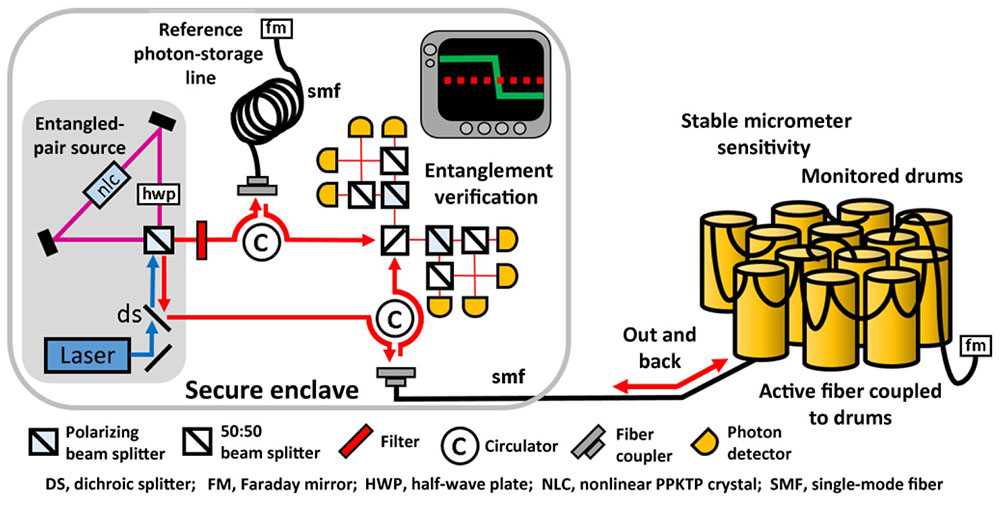![]()
[Image: iStock]
Cordons of fiber-optic cables are used around high-value sites, such as those containing sensitive or nuclear materials, as a safeguard against tampering. But even these sophisticated systems can be fooled in some circumstances. A team at the U.S. government’s Oak Ridge National Laboratories (ORNL) has now proposed a way to make such setups virtually tamper-proof, by injecting a dose of quantum entanglement (Phys. Rev. Appl., doi: 10.1103/PhysRevApplied.5.014001).
Conventional fiber-optic seals operate by confirming the integrity of a light signal encoded with secret information, after it makes a circuit around the area being protected. If the link is broken or otherwise tampered with, the consequent disruption or munging of the encoded signal can be detected, essentially in real time. Such systems aren’t foolproof, however: in principle, a sophisticated intruder could use conventional signal-detection techniques to discover the encoded information about the light’s classical state, and thwart the seal by sending back a “spoofed,” replicated signal to the downstream sensor.
To patch up this classical vulnerability, Brian Williams, Keith Britt and Travis Humble of ORNL turned to the light’s quantum side—and, in particular, to the non-spoofable property of quantum entanglement. Under their approach, pairs of spectrally and polarization-entangled photons (prepared, via spontaneous parametric downconversion, by passing a continuous-wave laser beam through a nonlinear crystal) traverse different paths: one “reference” photon is held in a storage line, and its entangled partner, the “active” photon, traverses the fiber path surrounding the sensitive material.

In the ORNL team’s concept, entangled photons are sent through different paths—one into a reference loop and one around the object protected by the anti-tamper seal—and measured at the end of the line to ensure that entanglement hasn’t been destroyed. [Image: Williams et al., Phys. Rev. Appl., doi: 10.1103/PhysRevApplied.5.014001]
When the active photon returns, it’s compared with the reference to verify entanglement (via measurement of polarization correlation). Broken entanglement indicates that the seal has been tampered with. And, because even the most sophisticated attempt to clone quantum information introduces noise into the resulting state, the system would not be vulnerable to a spoofing attack.
In a proof-of-concept setup, the researchers were able to detect tampering with a success rate of more than 99.99 percent accuracy, and with a false-positive rate of less than one in one billion. The system also can pick up changes in the signal’s path length of less than a millimeter—thereby protecting against a so-called redirection attack, in which an intruder does not break or disrupt the signal, but simply extends the path length by, for example, rerouting the signal-carrying fiber around the enclosure. ORNL has patented the system, which, according to the paper’s authors, offers “unprecedented surety in the detection of intrusion against fiber-optical seal systems.”

